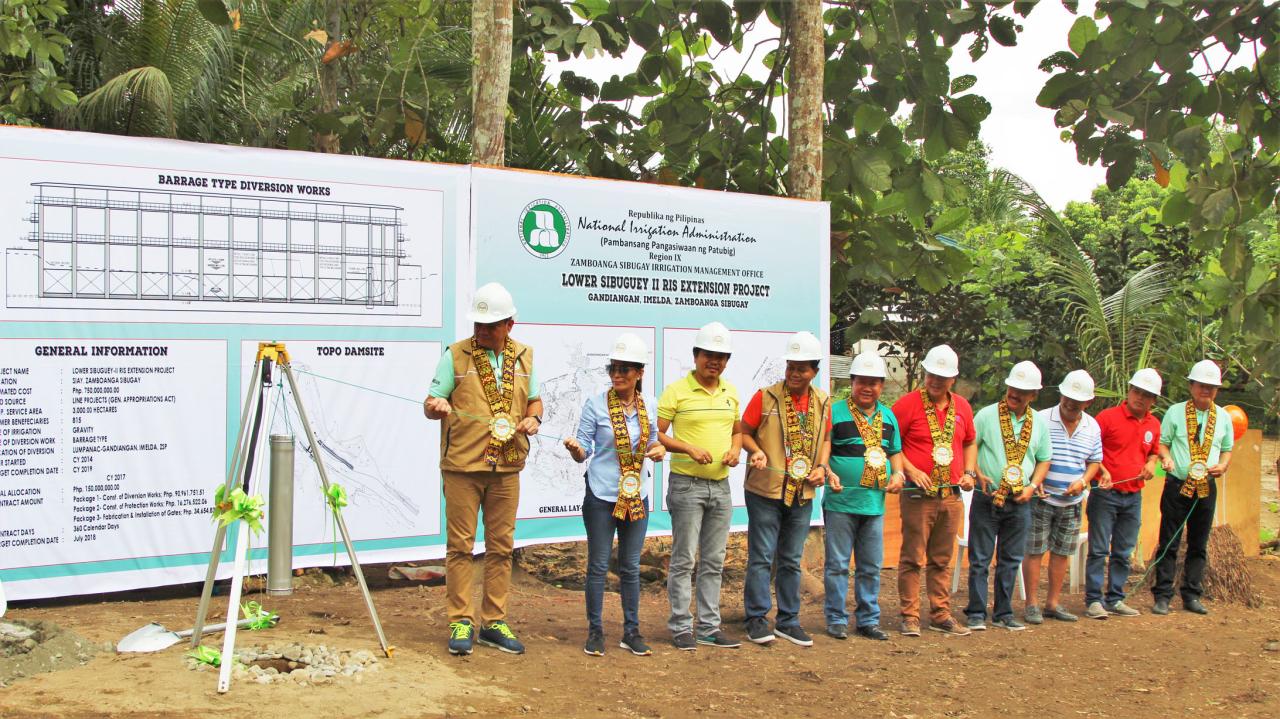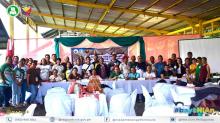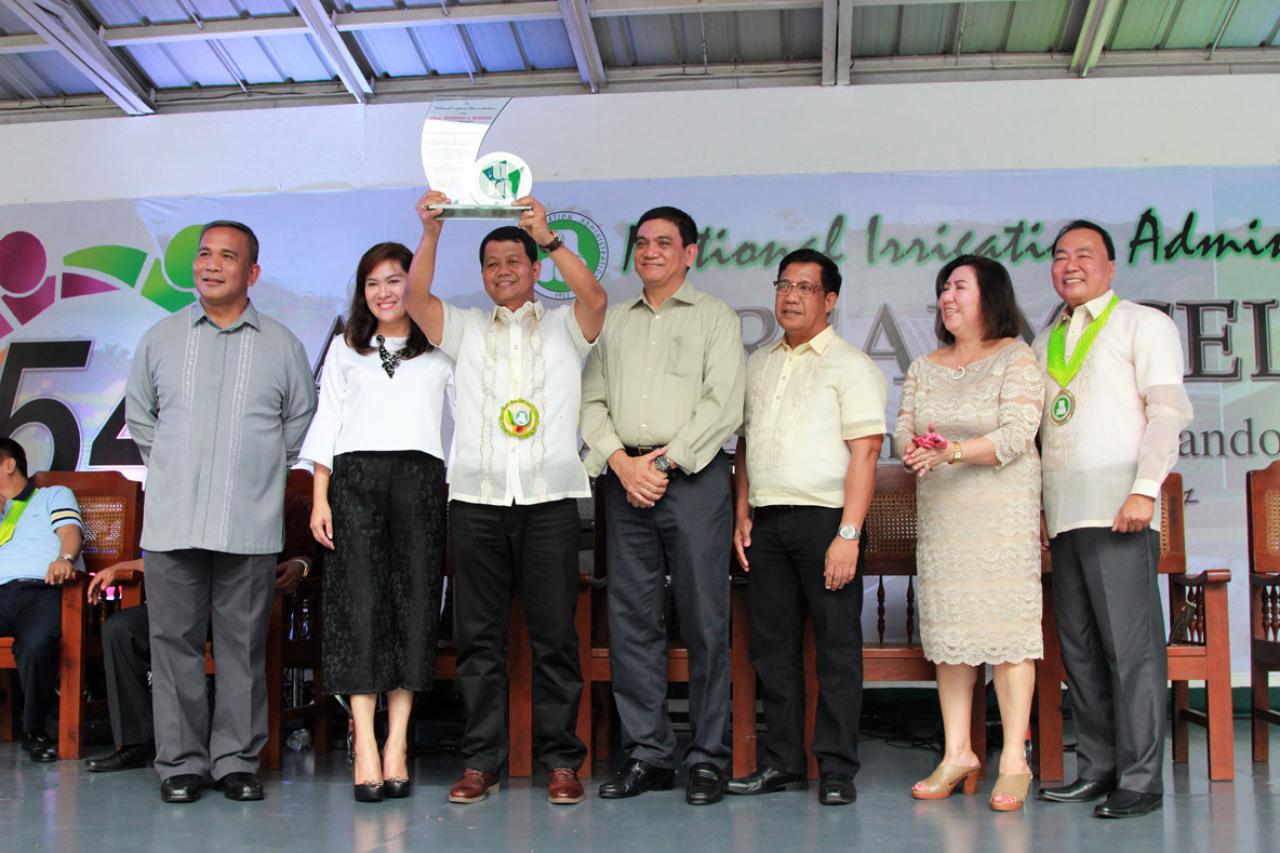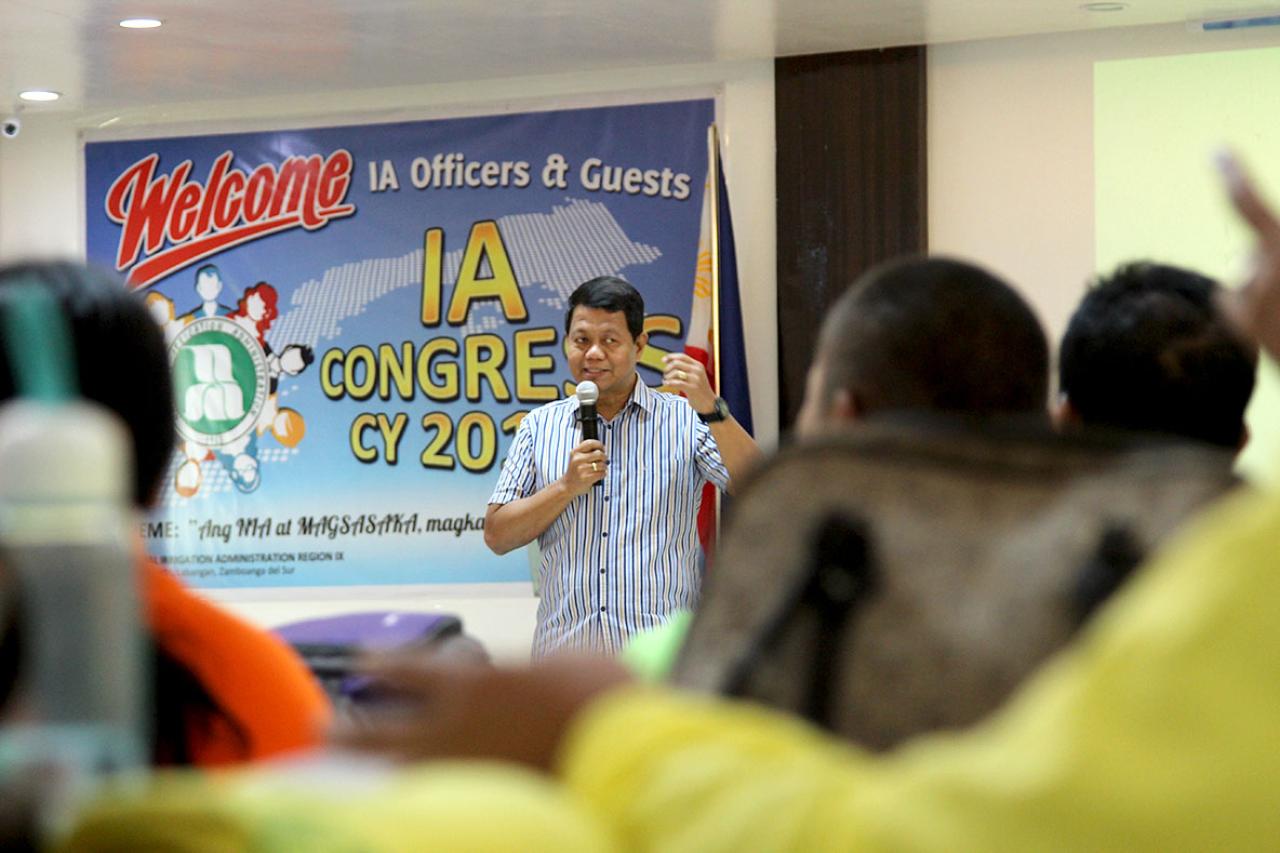Senior Deputy Administrator Bagasin inks contracts with irrigators, joins groundbreaking ceremony of Sibuguey Diversion Dam

Imelda, Zamboanga Sibuguey – In time with the region’s celebration of the 54th Founding Anniversary of the National Irrigation Administration (NIA), Senior Deputy Administrator Abraham B. Bagasin graced the highlights of the event: a mass contract signing with the Irrigators’ Associations (IAs) of National Irrigation Systems (NISs) during the opening ceremony at NIA Labangan, Zamboanga del Sur and a groundbreaking ceremony for Lower Sibugay II Diversion Dam in the afternoon in Imelda, Zamboanga Sibugay last July 5, 2017.
Modified IMT Contract Signing
The opening ceremony which was attended by all 68 IAs in the NISs, all NIA employees across the region and some LGU dignitaries marked the beginning of the three-day celebration of the agency’s founding anniversary observed at the regional level. Part of the said ceremony was the contract signing of all IAs mentioned, indicating the implementation of the free irrigation as promised by the Duterte administration. This free irrigation policy is reflected at the modified Irrigation Management Transfer (IMT) Program of NIA which NIS farmers all over the region had entered into contract this morning.
Although the guiding principle of the IMT program as cited in the NIA Chapter still applies – that is, to pursue improved irrigation system performance, irrigation service, and attain financial sustainability in the operation and maintenance of the National Irrigation Systems (NIS) through the transfer of NIS management, partially or fully, to duly organized IAs – the modification of the payment scheme is markedly effected to accommodate the said free irrigation policy. As a shared responsibility under the free ISF, NIA will subsidize the operation and maintenance (O & M) of irrigation canals for the NIS with a formula pegged at Php1,750.00 per section for the maintenance compensation; with section defined as 3.5 km for cemented canals and 7.0 km for earth canals. For the operations compensation, the IA or the Federation will now be paid Php150.00/hectare/cropping after complying with its responsibilities as stipulated in the contract. Unlike before, the region follows a NIA-IA sharing of 67/33, respectively, after the IA satisfies the collection efficiency target of the region. With the loss of such incentive, the IA may collect fees among its farmer-beneficiaries but only as a fund raising activity within the IA, not as a financial responsibility to NIA.
“This is a new phase that we enter, we are very grateful to the Duterte administration and to NIA for their prompt implementation of this free irrigation. It is our hope that with this new policy the IAs will thrive more in improving rice production as well as the farmer’s quality of life,” Romeo Abay, the Regional Federation IA President said.
Joined by NIA’s top management, Senior Deputy Administrator Bagasin, the mass contract signing signified the fulfillment of Duterte’s free irrigation promise for the Filipino rice farmers.
Sibuguey Diversion Dam Groundbreaking
Following the mass contract signing, SDA Bagasin and party proceeded to grace the groundbreaking ceremony of the Sibuguey Diversion Dam located at Lumpanac-Gandiangan, Imelda, Zamboanga Sibugay. Attended by IA and barangay officials, respective municipal mayors, representatives from the vice’s and governor’s offices as well as the head and staff of NIA Sibugay Management Irrigation Office (IMO), the said ceremony commenced with some words of welcome from the Municipal Mayor Roselyn V. Silva of Imelda and Municipal Mayor Jarvis M. Acosta of Siay–the two municipalities within project coverage.
The said project which was presented by Regional Manager Diosdado A. Rosales aims to irrigate a total potential area of 3,000 hectares covering 10 barangays–Mirangan, Lagting, Bulacanan, Salinding, Sibuguey, Longpod, Coloran, Labasan, Kimos, and Poblacion–with 815 farmer-beneficiaries from both Imelda and Siay municipalities of the province. Manager Rosales discussed to the beneficiaries the diversion dam project specifications, coverage layout and the 5-year project development. Now on its 3rd year of project implementation, the Sibuguey Diversion Dam which has an allotted budget of 150 M for CY 2017 is a part of the Lower Sibuguey-II network and is a major installment in this big ticket project that started in 2014 and is expected to finish in 2019. The said 5-year project has a total project cost of 750 M which along with the diversion dam also includes the construction of canal structures, service and access roads, drainage system, flood protection dike, and terminal facilities among others.
The ceremonial time capsule laying spearheaded by Zamboanga Sibugay IMO Head, Carlos A. Sabado marked the beginning of the construction of the Sibuguey diversion dam including the protection works, and the fabrication and installation of electo-mechanical gates. The project is set to be completed on July 2018.
“This whole project has helped and will continue to positively and tremendously impact our farmers in Siay. In fact with the existing project in Siay, it has already allowed our farmers to compete with the existing rice market,” said Siay Municipal Mayor Acosta in dialect.
Moreover, SDA Bagasin during his speech conveyed the message of Administrator Ricardo R. Visaya on his staunch and strict stance on project implementation.
“Our Administrator is very strict in project implementation, the contractors and all parties involved must follow the standards,” he said.
The new NIA Chief Ricardo R. Visaya has recently made known his 4-point agenda which are (1) eradicate graft and corruption, (2) institute measures to improve delivery of services, such as but not limited to, modernization of equipment for operations and project implementation, (3) strengthen NIA organization, and lastly (4) develop human resources and improve their capabilities. He is also guided by President Duterte’s principle on “Do what is right and what is legal.”








